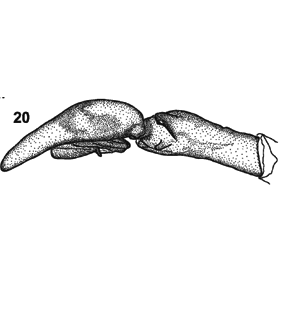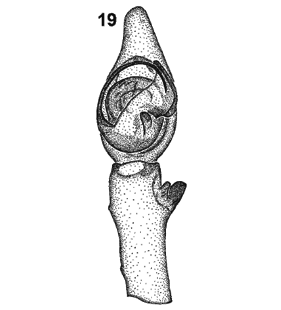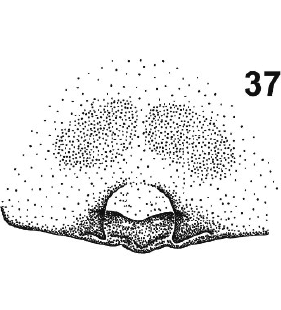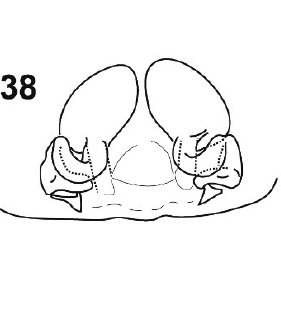Aterigena aspromontensis Bolzern, Haenggi & Burckhardt, 2010
Beschreibung
Männchen
Prosoma mit dünnem schwarzem Rand, 2 dunkle Längsstreifen, manchmal zu einem dreieckigen Felck reduziert. Sternum mit hellem undeutlichem Mittelstreifen. Opisthosoma dunkel grün-grau, vorne mit zwei hellen und teilweise verschmolzenen Bändern, welche hinten in Winkelflecken übergehen. Prosomalänge: 3.27 mm.
Weibchen
Prosomalänge: 3.13–4.26 mm.
Häufigkeit: Nur wenige Tiere bekannt
Verbreitung
Phänologie
| Jan | Feb | Mar | Apr | May | Jun | Jul | Aug | Sep | Oct | Nov | Dec |
 |  |
Abbildungen
Verbreitungsnachweise
"No reference" bedeutet nicht, dass die Art in diesem Land nicht vorkommt, sondern dass wir die Referenz hierfür noch nicht eingefügt haben. Wir arbeiten daran.
Literatur
Bolzern A, Hänggi A, Burckhardt D (2010) Aterigena, a new genus of funnel-web spider, shedding some light on the Tegenaria-Malthonica problem (Araneae: Agelenidae) Journal of Arachnology 38: 162-182 ![]()
Pantini P, Isaia M (2019) Araneae.it: the online catalog of Italian spiders, with addenda on other arachnid orders occurring in Italy (Arachnida: Araneae, Opiliones, Palpigradi, Pseudoscorpionida, Scorpiones, Solifugae). Fragmenta Entomologica 51: 127-152 ![]()
WSC (2025) World Spider Catalog. Version 26. Natural History Museum Bern, online at http://wsc.nmbe.ch (28.2.2025) doi: 10.24436/2 ![]()




